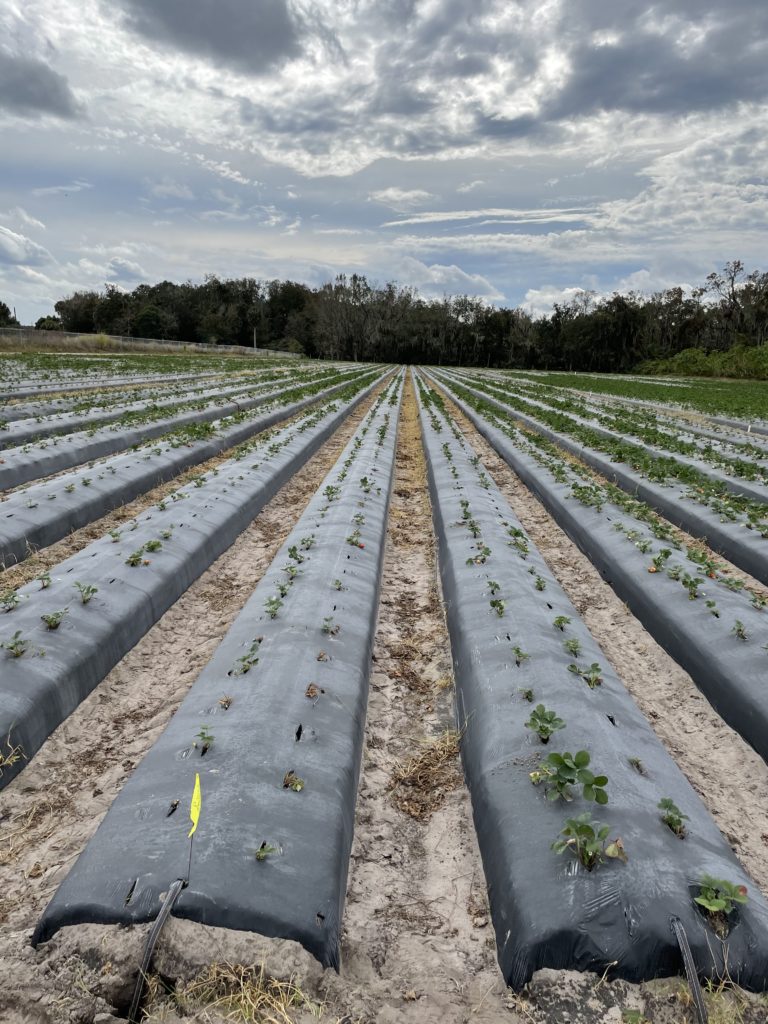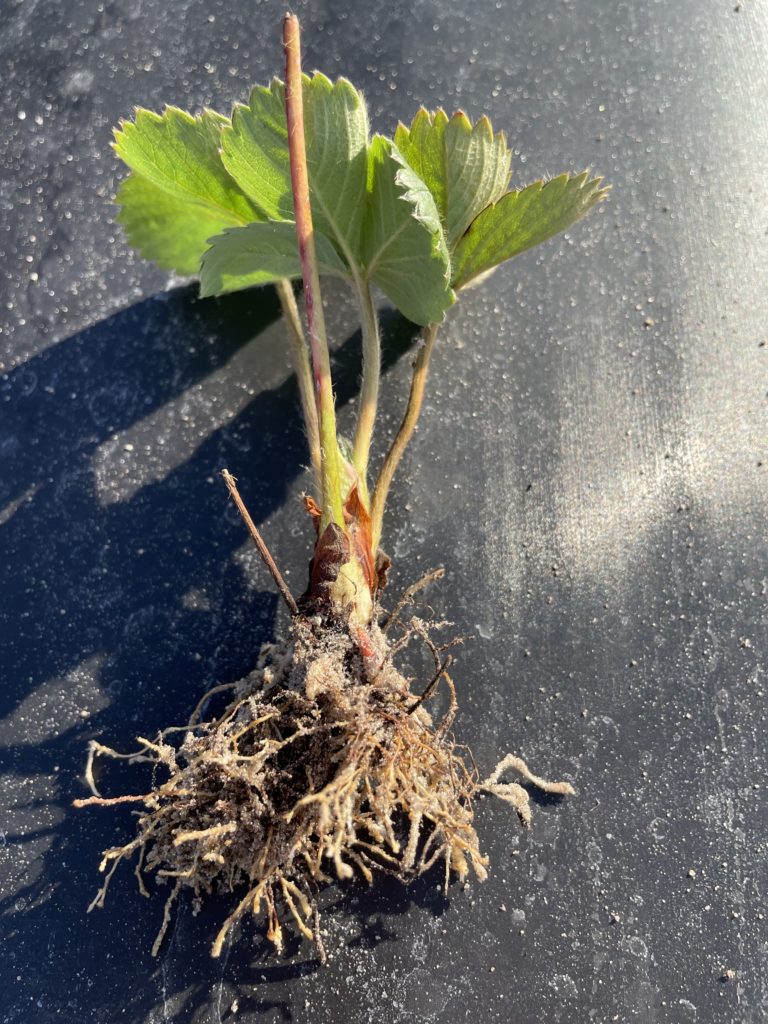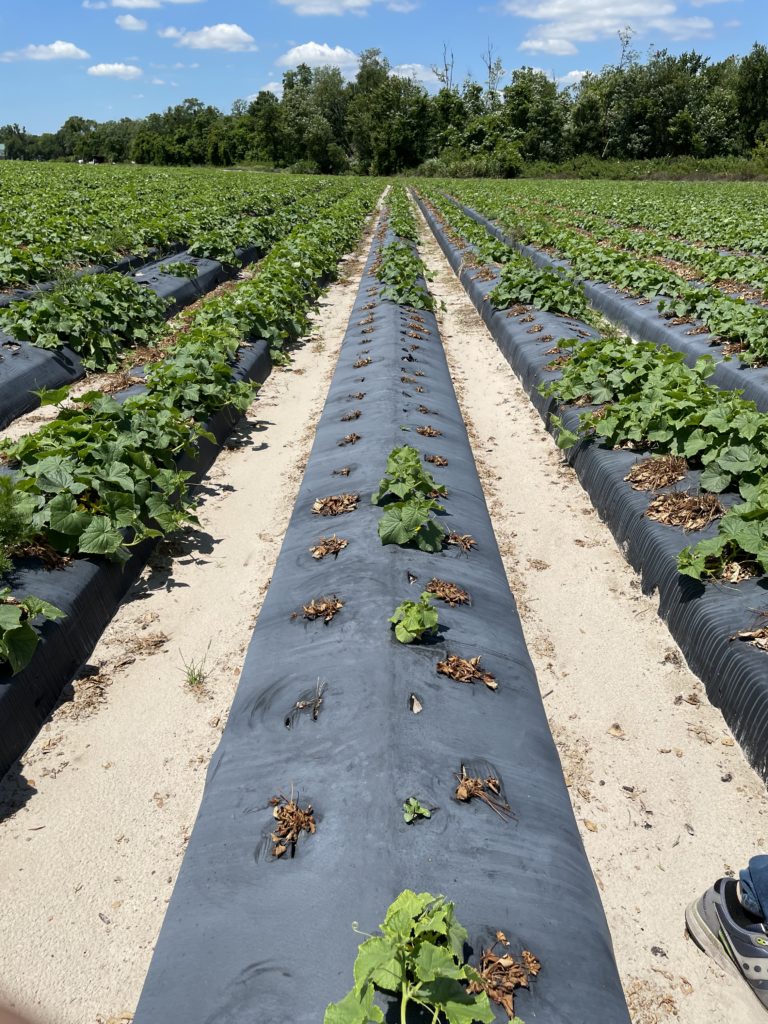
By Johan Desaeger
Florida strawberry season is right around the corner, and nematodes are lying in wait.
Sting Nematode
Belonolaimus longicaudatus (literally “long-tailed arrow-like plague”), or simply sting nematode, is one of the most dreaded pests for Florida strawberry growers. If not managed, it can cause severe plant stunting and up to 100% yield loss (Figure 1).

Sting nematodes are native to the sandy coastal plains of the southeastern United States and are one of the largest plant-parasitic nematodes, measuring almost 1/10 inch long. They have a very long stylet, which is a hypodermic-like needle used to feed on strawberry roots, killing the root meristem and halting root growth. Lateral roots will develop, but the nematode will migrate to these lateral roots and damage them as well. This causes an abbreviated and stubby-looking root system (Figure 2).
Young strawberry plants are much more susceptible to nematode damage, so it is key to minimize nematode damage right from the get-go. Once plants become damaged by nematodes, it is very difficult to remediate this.
Typically, nematode management is started before planting, in most cases by applying soil fumigants like 1,3-D (Telone) and metam (such as K-Pam). These products should be applied when installing plastic-mulch beds, which can be anywhere from three to six weeks before planting.
In severely infested fields, an additional deep-shank broadcast application of Telone is recommended prior to bed formation. This will target nematodes that are hiding below the hardpan, which are not harmed by regular shank fumigation with Telone that mostly targets nematodes above the hardpan.
Fumigants must be applied by specially licensed applicators, and buffer zone and other restrictions must be followed. However, this is not the case for fluensulfone (Nimitz) and fluopyram (Velum), two recently introduced non-fumigant nematicides. These products pose little risk for the applicators and can easily be applied through the drip irrigation system.

Nimitz should be applied about seven days before planting while Velum can be applied throughout the season if the maximum rate is not exceeded. Field trials at the Florida Strawberry Growers Association research farm in Dover as well as in grower fields around Plant City have shown promising results, especially with a Nimitz-Velum program.
Biological nematicides such as Majestene, MeloCon, Promax, Dazitol and some others offer additional options for in-season treatment but should not be relied upon as a sole treatment. Instead, they should be combined with any of the above options.
Northern Root-Knot Nematode
Another common nematode in Florida strawberry fields is the northern root-knot nematode (Meloidogyne hapla). Many other root-knot nematodes exist in Florida that cause considerable problems in vegetables and other crops, but the northern root-knot nematode is the only root-knot species that affects strawberries.
Root-knot nematodes live inside the roots and therefore can be spread via strawberry transplants. Northern root-knot nematodes are common in the northern United States and Canada, where most of Florida’s strawberry plants are grown. Probably, the widespread distribution of these nematodes in Florida strawberry fields is linked with inadvertent introductions from out-of-state nurseries.
Root-knot nematodes are not as damaging as sting nematodes in Florida strawberries. Sting nematode damage can show up as early as November as soon as plants start producing fruit. Root-knot damage will mostly appear when soils are cooler, typically toward the end of the season, having less of an economic impact. However, for growers that plant a vegetable double crop after strawberries, usually around March, plants can suffer considerable damage from root-knot (Figure 3). It is recommended to apply a nematicide to help protect the double crop.
Nematodes are just one of many pests and diseases that strawberry growers in Florida must deal with, but they may be the most difficult to manage. Nematodes can be very hard to detect as they move to deeper soil layers or become dormant during the off season. This seems to be especially true for sting nematodes in strawberry fields. Prevention is key. Recognizing and keeping track of problematic fields or areas within a field that are prone to nematode damage is the first step for successful management of these secretive pests.
Johan Desaeger is an assistant professor at the University of Florida Institute of Food and Agricultural Sciences Gulf Coast Research and Education Center in Wimauma.









